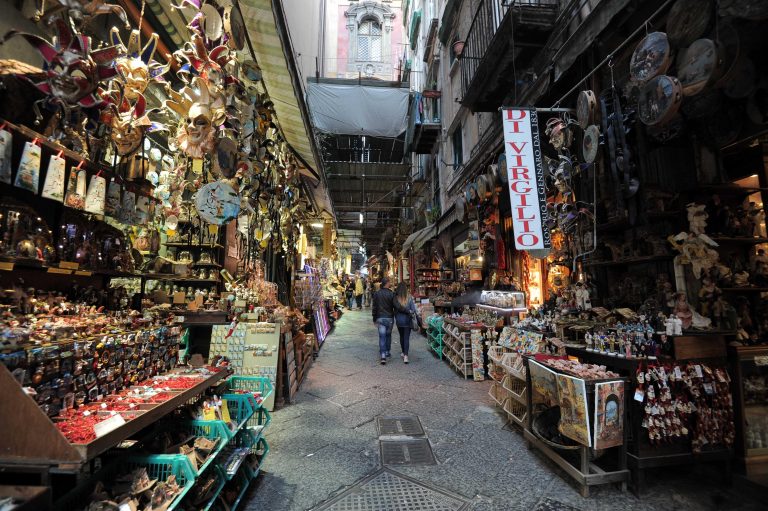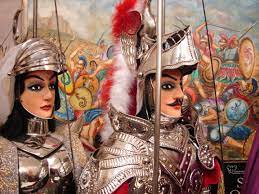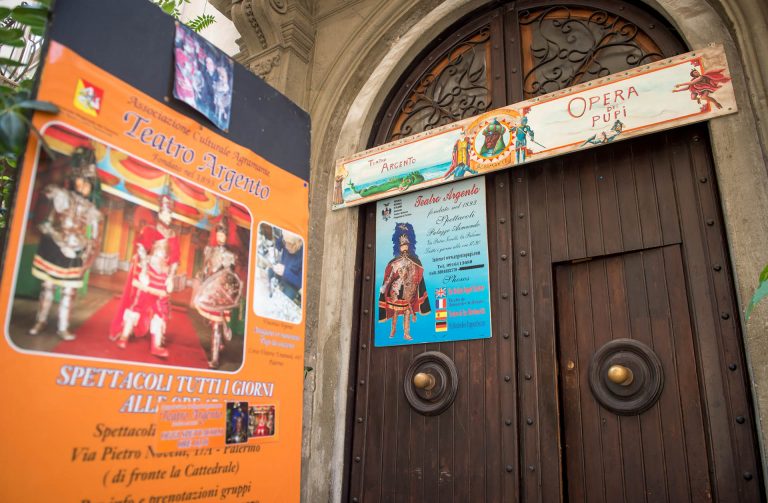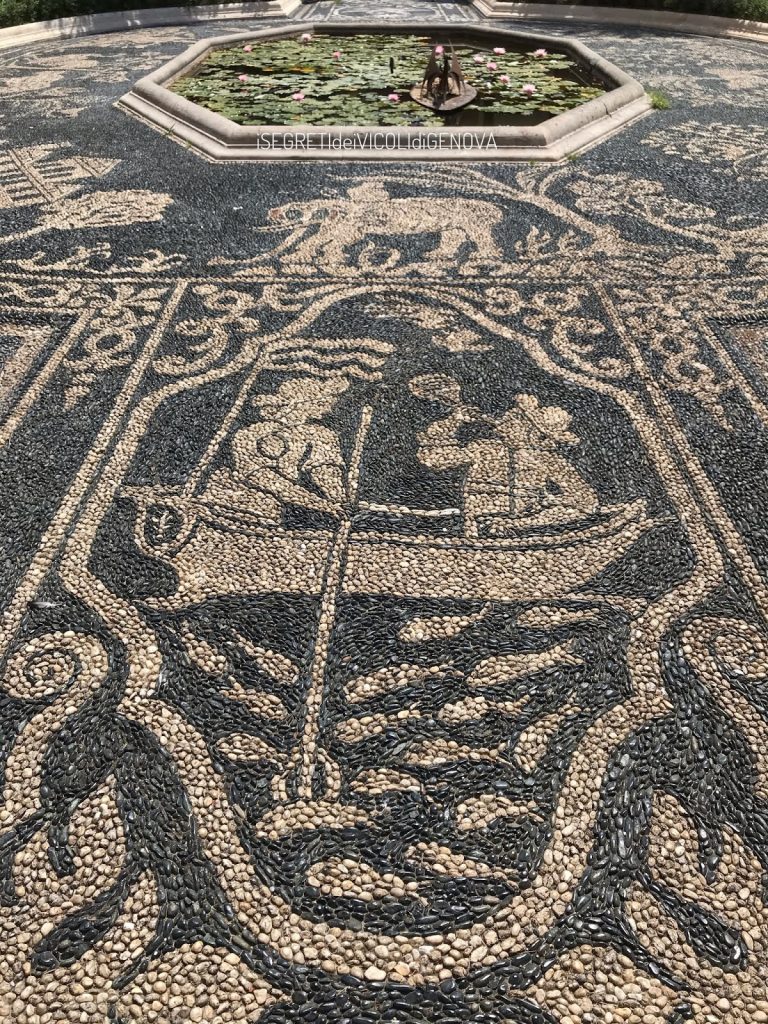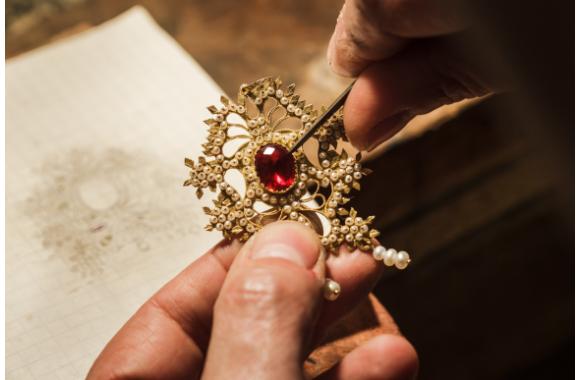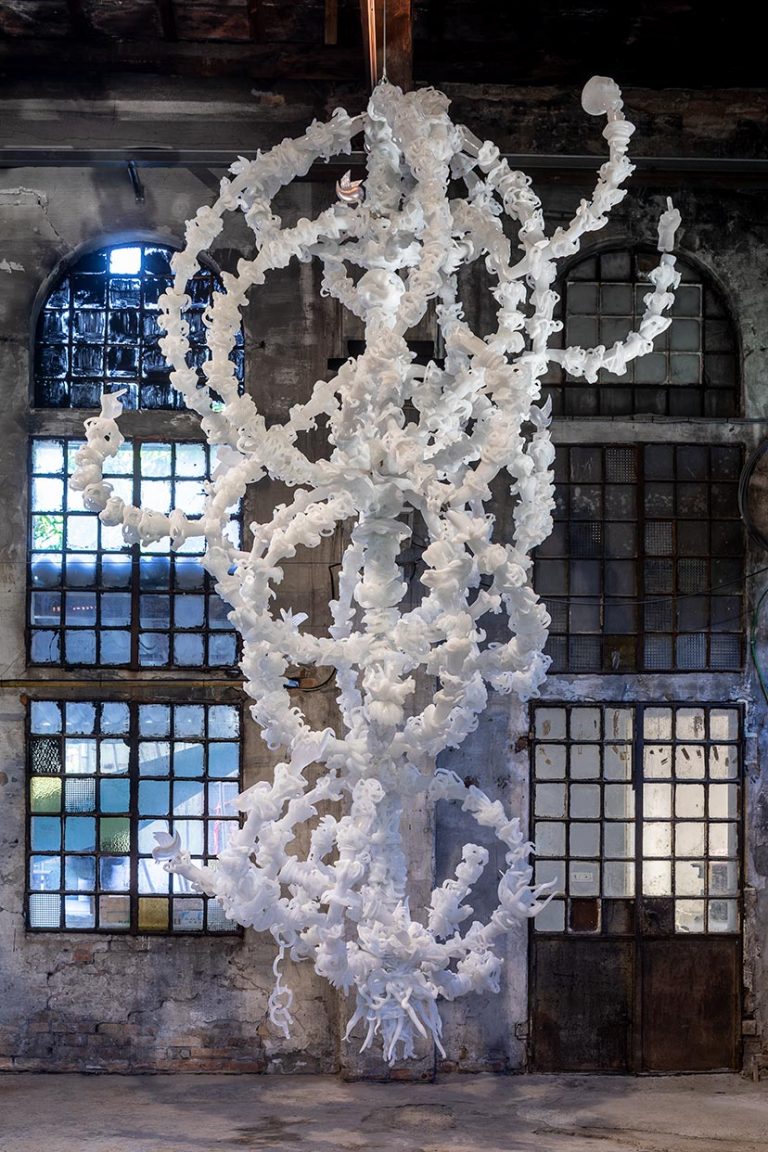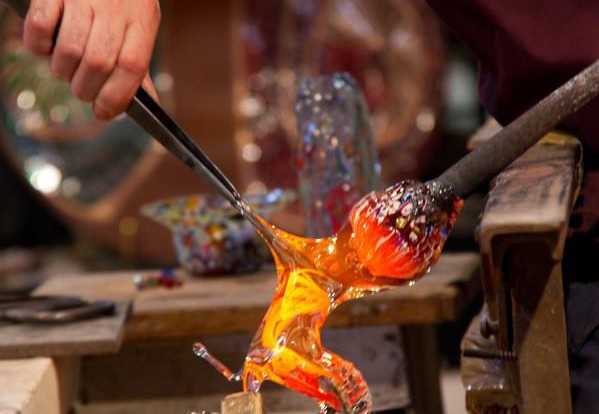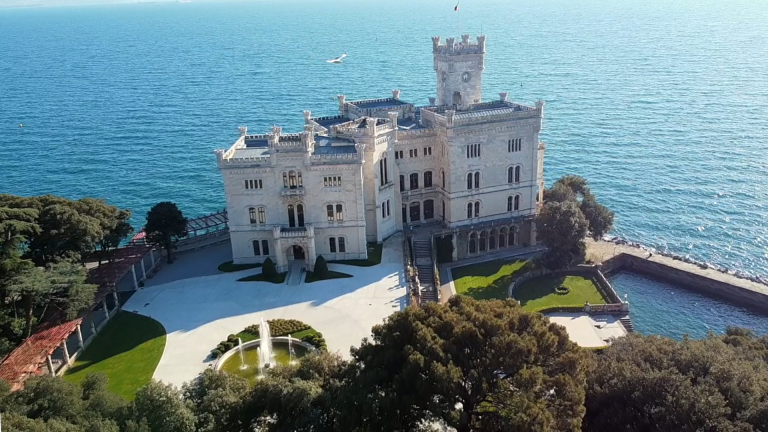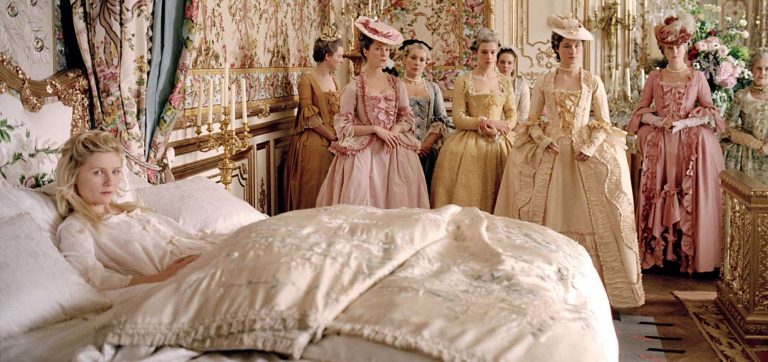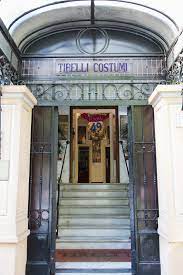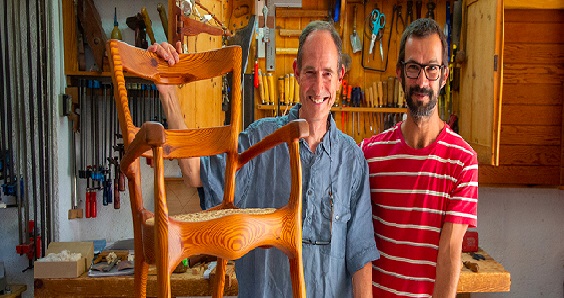Crafts, arts and the future: Costa Cruises Foundation
The Costa Cruises Foundation’s ambitious project “Traditions of the Future” aims to give concrete support to traditional art crafts at risk of disappearing in Italy, France and Spain by securing their future and promoting their enhancement.
To understand the importance of these realities, one only has to reflect and ask oneself what Naples would be like without the Nativity scenes, or what it would be like seeing Genoa without the cobblestone mosaics or imagining Palermo without the Sicilian puppets.
Let us now show you the realities involved: the 13 historic workshops; 13 different destinations visited by Costa Cruises‘ ships, in Italy, France and Spain.
Master Ulderico Pinfildi’s workshop, the Neapolitan Nativity tradition
Naples, a city that has always proudly exhibited the extraordinary art of the nativity scene, a tradition that is very much alive in the city’s workshops, especially in the pulsating neighborhood of San Gregorio Armeno. Right here stands the workshop of Maestro Ulderico Pinfildi, who has been working for years in this extraordinary art, creating unique pieces, a meticulous art that leads to the creation of extraordinary masterpieces. Here Master Ulderico teaches his art to Antonio, a young up-and-comer who at the age of 20 began his apprenticeship here following his studies at the Capodimonte Institute. Antonio is treasuring the advice of the master, who “by rote” is forming the young man’s artistic hands. Ulderico, the master of the prestigious workshop stresses the importance of bringing young people closer to training in craftsmanship to become masters of art through this project.
bottega ulderico pnfildi napoli
san gregorio armeno napoli
The Sicilian puppets of the Argento Family in Palermo.
We stop in Palermo for a visit to the Sicilian capital and a reminder that the city preserves the renowned Sicilian Puppet Theater, an oral and intangible masterpiece of humanity; known as a UNESCO World Heritage Site. Here we meet Nicolò Argento, who leads the business started by his great-grandfather, handed down for five generations, since 1893. The passion of manual construction of puppets is a knowledge to be handed down to young people in fact Giovanni, is doing his apprenticeship here, who with great skill is training in the creation of the puppets, their costumes, their armor, finished with attention to detail. “Giovanni is an added value that comes from Fine Arts,” says Nicolò, who will host the trainee for six months, during which time the trainee will also experience staging and the theater itself.
Sicilian puppets
Theatre Argento
Gabriele Gelatti’s Risseu in Genoa
In Genoa we meet Carlotta, a young intern doing her internship at Gabriele Gelatti’s workshop, a famous pebble mosaicist and student of master Armando Porta. Carlotta did her thesis precisely on Ligurian Risseu, an ancient technique based on the enhancement of the individual stone, created with rounded pebbles smoothed by the sea that become works with extraordinary geometries. Carlotta tells us about her day: dedicated to collecting pebbles, cleaning them and working them using very sharp chisels, then beating the outline so that the excess mortar comes off, then filling it with fresh mortar, making the design and then going on to rebuild the whole thing. Elaborate and painstaking work that requires patience, time, but above all a love of art and beauty, important to pass on to the young; an eco-sustainable construction practice available to the artisans of the future.
risseu cortile di Palazzo Reale Genova- costa crociere foundation
ligurische Risseu
The Sardinian goldsmith art of Gioielleria Carta in Cagliari
We move to Cagliari, the cradle of the Sardinian goldsmithing tradition. Here we make the acquaintance of Pierandrea Carta; his workshop is located in the historic center of Cagliari and continues the passion started by his grandfather in the early 1900s. Pierandrea enthusiastically accepted the project proposed by Costa Crociere Foundation, and the trainee working in his jewelry shop is named Carlotta and is 19 years old. After art high school Carlotta, through one of her professors, embarked on this path as a filigree goldsmith. In this jewelry shop, Carlotta learned everything from scratch, so things never studied in school, such as the extraordinary technique of wire twisting and the obsessive attention to detail.
New forces, new passions then cause these traditions to be used, and the transmission of this knowledge to young people is a lifeblood.
Gioielleria Carta
Gioielleria Carta
Studio Berengo and the art of glass in Venice
Speaking of art in Italy, one cannot help but mention the fascinating Venice, which with the art of glassmaking boasts a history that attracts masters and artists from all over the world. Thus, in fact, was born the fame of Studio Berengo, on the island of Murano; with the intention of inviting contemporary artists to come and work in their furnaces: with the intention of transforming these impossible dreams that artists have into various sculptures and installations. At Studio Berengo, Miriam, who after studying at Abate Zanetti High School, began her experience at the Studio, attends the internship. She tells us about her typical day; the day starts with a group meeting, then there are those who work as a team and those who work individually to create glass works. The studio is known for the application of the blown glass technique, also called the casting technique, which involves tracing the shapes of the model that the artist brings in as a model. In this Studio talent and knowledge are passed down from experienced craftsmen to young apprentices, promoting the training of new glass masters to project into the future the ability to interpret an idea and know how to transform it into a work of glass art.
studio berengo
art of glass in Venice
Historical museum and park of Miramare Castle in Trieste
In Trieste, the art of restoration preserves the treasures of Miramare Castle, which in recent years has become an important cultural attraction serving the community. Museum director Andreina Contessa tells us about the restato and protection activities, which are carried out on the whole range, starting from the most basic things: floors, picture gallery, chandeliers, to the most elaborate objects. Among the most difficult restoration activities are antique wall hangings, which are in constant need of ongoing maintenance. This is taken care of by young Sara, who is carrying out her own textile restoration work at the museum; a work that is preceded by the study of the history of the object and then carried out with restoration work directly in the room. A phase, then, where you come into contact with visitors, Sara tells us a fun and very curious aspect which allows you to say what you do and make the visitor understand the value of the work behind what the viewer’s gaze admires. The director welcomed this Costa Crocere Foundation project with open arms, saying that involving young people in these restoration processes is crucial, because the future of our heritage is in the hands of young people.
Bedroom Miramare
Miramare Castle
The tradition of theatrical costumes: Tirelli costumes in Rome
Tirelli Costumes, has been making film and theater costumes in the tradition of haute couture craftsmanship since 1964 and is unique in the immensity of its repertoire, authentic and cinema, and the know-how of its craftsmen. The Bottega represents a repertoire of five decades of stage art in the service of theater, cinema, opera, has few equals in the world, along with the collection of sketches, drafts, preparatory drawings, guarded by the tailor shop. In addition, Tirelli Costumes has collaborated on costumes for the films “Titanic,” “Elizabeth,” “Moulin Rouge,” “The Chocolate Factory,” “The Duchess,” “Robin Hood,” and “Alice in Wonderland.”
During the internship organized by Costa Crociere Foundation, the intern will be placed in the theatrical tailoring department of Tirelli Costumes to work on both new and repertory theatrical and film costumes. Activities will include organizing the warehouse, filing costumes, aging costumes, in-depth sewing, finishing and assembly techniques, with hints of painting, embroidery, millinery.
tirelli costumes
tirelli atelier
Project Shops in Europe
In France, the Chantier Naval Borg (shipwright) workshop in Marseille has been involved in this project, where the tradition of carpenters is perpetuated and the typical “Marseilles barquettes” are made. Apprentices learn this age-old art, guided by the passion and seafaring wisdom of their masters.
SPAIN:
The workshop of Arturo Mora , master of ceramics in Valencia, tells the story of a refined art, which finds its roots in the Hispanic-Muslim tradition. In this workshop of tradition, the ancient process of gilded earthenware is used to create unrepeatable works of art with skill, knowledge and passion.
Bottega Jordi Ribas Ros (cabinetmaker – Mallorca). Mallorca treasures the knowledge of cabinetmaking, a tradition rooted in this island. In fact, Mallorcan carpentry transforms ancient woods with expert hands into soft organic forms inspired by nature.
Santa Conserva’s atelier in Malaga, deals with restoration of antique textiles in the sacred sphere. In fact, Malaga has a great tradition of textile art that na made famous tapestries and costumes. The art of conservation and restoration protects sacred art treasures with the restoration of antique textiles while preserving their originality.
In the 40Plumas glassworks in Barcelona; ancient glassmaking techniques are combined with experimentation with new knowledge, brought by young trainees. Thus was born a unique synergy, which in the hot and cold technique presses the creation of glass objects restored with traditional techniques.
Our tour through the ancient workshops of Europe ends in Ibiza, in the workshop of Nicolau Baucells , master of art restoration. Ibiza draws its strength from the elements of nature. Artistic stucco is a technique handed down by a few masters: lime paste, mixed with wisdom and careful execution of ancient techniques of coating allows the creation of heritage works or new constructions.
ceramics Valencia
Costa Crociere Foundation
In this creative context, Costa cruises Foundation accompanies new generations of masters of art by placing them in craft workshops to learn the art of savoir-faire. Only by connecting the experience of the masters to the curiosity of young people can the immense heritage of these ancient crafts be projected into the future.
To support the Costa Crociere Foundation‘s initiatives and find out about all the initiatives you can log on to the Costa Crociere Foundation website In this way you too can help improve the social and environmental conditions of communities in Italy with concrete projects.
Stay up-to-date on initiatives, cruise line news on Cruising Journal.


